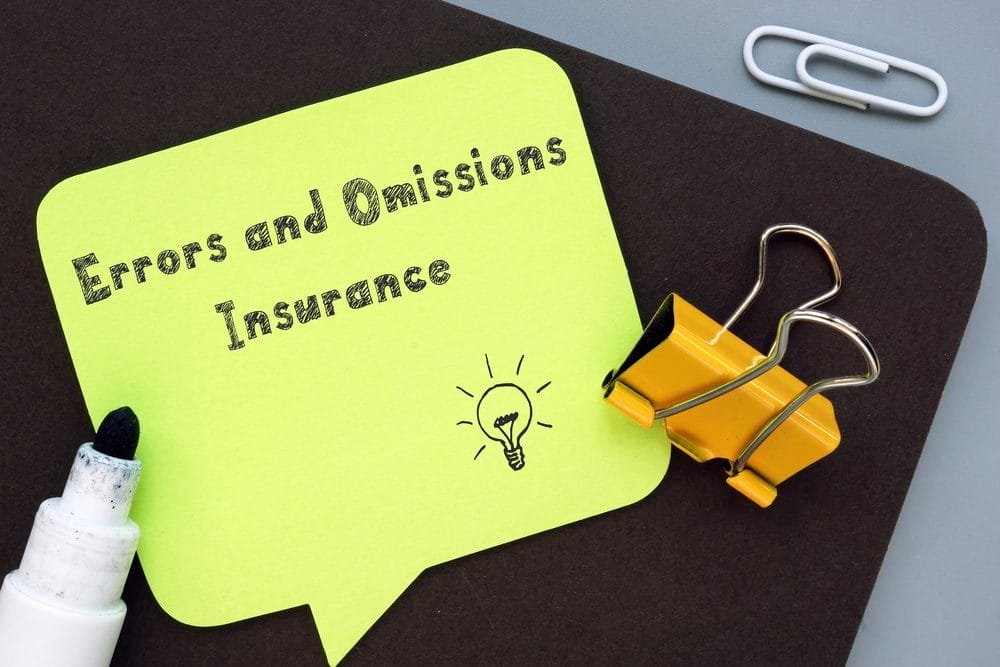When you start a business, many different types of insurance are available to protect your business and help things run smoothly. However, we don’t always need every single insurance policy out there. It’s important to research before choosing what insurance companies you invest in. Errors and omissions (E&O) insurance is a great choice if you offer services and/or are worried about employees making a mistake that could lead to major problems. Do you truly need this insurance, and can you operate without it? Find out below as we explore the ins and outs of E&O insurance.
What is E&O Insurance?
E&O insurance, also known as professional liability insurance, protects businesses in the event of a large mistake, negligent acts, or errors leading to financial loss. This insurance works similarly to any other sort of insurance and is sometimes referred to as malpractice coverage. Professional liability insurance comes in handy when a client claims a specific type of service or advice was negligent, incomplete, and/or inaccurate.
For example, if you have a construction business and a group of employees build a faulty deck outside that collapses, the insurance company would handle the situation for you in terms of financial costs. Certain customers’ claims aren’t always valid, and the E&O insurance company would investigate it thoroughly, which saves you a headache and money.
What Does E&O Insurance Cover?
E&O insurance covers many items, but this depends on your business’s specific policy. E&O insurance typically covers settlements, judgments owed, legal costs, negligence, misrepresentation, inaccurate advice, violations of good faith, and errors in services provided. This includes covering claims for past services, copyright infringement, damages, and other expenses. Some policies will even pay for mistakes that happen outside of the country.
What Doesn’t E&O Insurance Cover?
E&O insurance enhances and expands your business’s overall protection, but it won’t cover every expense that comes up. Professional liability insurance doesn’t cover bodily injury, discrimination or harassment claims, employee illnesses, data leaks, or illegal acts.
It also doesn’t cover purposeful wrongdoing, property damage your business causes, patents, trade secrets, and work-related injuries. Remember that you can’t file claims for past errors and omissions before your policy start date.
Who Needs E&O Insurance?
Most businesses that offer a service, expert advice, consultations, or charge a fee of any kind could benefit from professional liability insurance. Some common examples of professionals who could use this include advertising agents, real estate agents, accountants, bookkeepers, graphic designers, architecture, technology consulting and more.
Certain states, such as Tennessee, Alaska, and Rhode Island, require real estate agents to have it to be licensed. Certain licensing boards, professional associations, and laws also require other industries to carry it. Some clients will refuse to work with you unless you have proof of E&O insurance.
When Should You Get It?
You should consider investing in professional liability insurance sooner than later. It’s best to be prepared beforehand so you’re not hit with a potential lawsuit. For example, a client might sue you for misrepresentation due to a mistake in your company’s advertisement.
E&O insurance will cover your legal costs and the cost of a lawyer and help you maintain your focus on other business activities while they handle the situation for you. If you rack up multiple claims and lawsuits, the cost of your overall premium will go up.
E&O Insurance Costs
The cost of E&O insurance varies from company to company and depends on several factors. Some of these factors include the industry, the risks associated with the industry, the type of coverage, location, coverage limits, and the number of employees. According to Nerdwallet.com, business owners spend an average of $500 to $1000 per employee per year on E&O coverage.
It’s recommended to get at the minimum amount of coverage because it can be vital to your business’ future livelihood. Also, consider talking to an E&O agent to discuss which policy best suits you and your business.
Conclusion
There are five common types of human error in the workplace: fatigue, poor training, disregarding safety, messing around and rushing through work. Whatever the case may be for your company, humans aren’t perfect and it’s almost inevitable that mistakes will be made. E&O insurance is one of the best solutions and safeguards a business could invest in to prevent a negative hit to their reputation or even their pockets.
E&O insurance covers a variety of situations and is required for businesses in certain states. Technically, you can operate without E&O insurance, but it would be a worthwhile investment for most businesses looking to cover all of their bases.
The Editorial Team at Healthcare Business Today is made up of skilled healthcare writers and experts, led by our managing editor, Daniel Casciato, who has over 25 years of experience in healthcare writing. Since 1998, we have produced compelling and informative content for numerous publications, establishing ourselves as a trusted resource for health and wellness information. We offer readers access to fresh health, medicine, science, and technology developments and the latest in patient news, emphasizing how these developments affect our lives.








